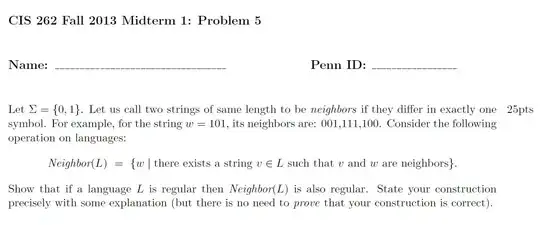
I know that a regular language can be made into a DFA, so can I just make a DFA for the regular language? Also, someone told me I should make a e-NFA from the DFA, but I don't see what would be the point. I was at one of the tutorial and the tutorial leader explained this, but he did a really poor job at it. He doesn't really speak English, so basically I am completely clueless. Can't find any example either.